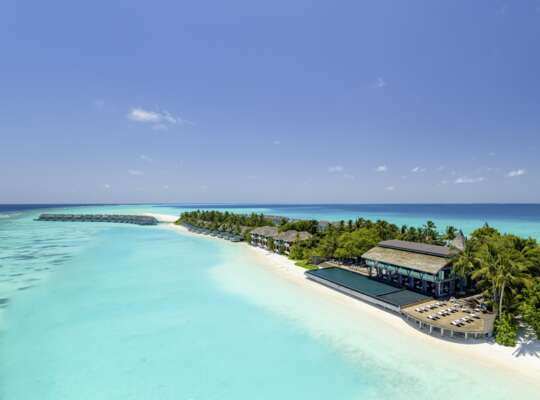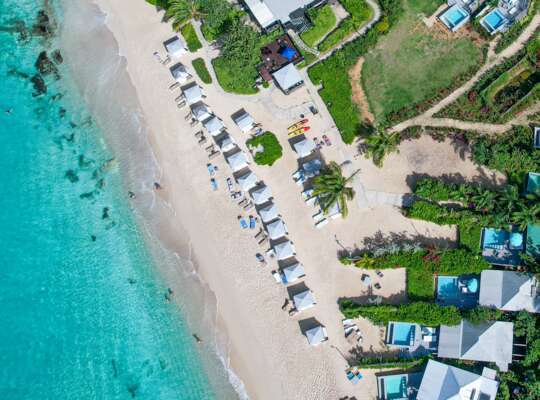Travellers to exotic waters, like those surrounding the islands of the Maldives, may be treated to a natural phenomenon that turns the night-time ocean into a field of glowing stars.
As waves break on the sandy shore, or bare feet step into wet sand, a bright blue glow appears. This magical effect is caused by the bioluminescent plankton that often appears in warm coastal waters. If witnessing this dazzling sea spectacle is on your travel wishlist, let us tell how to increase your chances of finding it on your next holiday.
How to spot bioluminescent plankton
One man who understands the wit and chance needed to locate bioluminescence is Kris Williams, a photographer specialising in time-lapse landscape and astrophotography whose work with bioluminescence was featured on BBC Earth.
Kris says “As with most natural phenomenon, it is a huge challenge to put yourself in the right place at the right time. Blooms of bioluminescent plankton are notoriously difficult to predict, and they occur most often far out in the ocean. It is only when tidal currents cause them to be washed towards the shore in large numbers that you will be able to see them from land.”
Although its shoreline appearance is a rare occurrence, you’re more likely to spot bioluminescence with some determination, patience and these few key pointers from Kris:
- Do your research and find locations such as small bays, coves and harbours where bioluminescence has been seen before.
- The warmer months tend to be more successful for bioluminescence sightings, and I’ve seen the phenomenon occur myself in the months between April and November.
- If you hear about a display happening near you, try the same spot the next night, as stronger displays can stay around for a while. Some displays I’ve seen only occur for a night; others have stayed there for several weeks.
- You will need to be out looking during the nighttime, plankton have a circadian rhythm and will only emit bioluminescence during that time. You need the darkness to be able to see them.
- It is sometimes possible to spot the blooms during the day by looking for clumps of red algae in the water near the shoreline – this is a good indicator that the plankton is present there. It’s worth visiting that spot again the following night. Remember that this indicator tends to be only for larger displays, and if you can’t see any red algae, it doesn’t mean that the plankton isn’t present.
- If you are out walking on a beach at night, turn off your torch, phone light and any other lights, to let your eyes acclimatise to the darkness, and you’ll soon be able to find your way around. If you are shining a light onto the water then you won’t see the plankton glow at all, they must have darkness (but they are not affected by moonlight and it’s still possible to see them under a bright moon).
- For bioluminescence to happen, the plankton needs to be moved or disturbed by something, so as the surf crashes onto the shoreline, the waves will ripple in blue light. Or as you walk along the beach, plankton that’s left deposited on the shore’s sand and stones will light up and sparkle beneath your feet. If the sea is particularly calm and just gently lapping the shore, this may not be enough to cause bioluminescence to light up. It’s worth agitating the water to check, throw a stone into the sea and if the plankton is there you’ll be rewarded with a bright blue splash of light.
Where to see bioluminescent plankton
If you want to see the bioluminescent plankton for yourself then there are several locations throughout the world where they regularly appear. Luckily, most of the locations where the plankton appear also make good holiday destinations. The Maldives is famous for shining white beaches and teeming marine life and almost every island is visited by glowing plankton. The high season for spotting the plankton is mid-summer through to winter but it can appear at any time.
San Diego is another place where locals and holidaymakers report seeing the waves glow as they break on the shore or shine as a surfboard cuts through a wake. Other countries that have reported sightings of bioluminescent plankton are Australia, Vietnam, Thailand, Puerto Rico and Jamaica.
Magical moments in the Maldives
Marine wildlife photojournalist, Doug Perrine, has been lucky enough to witness the phenomenon several times. He recounts the time he saw bioluminescence in the Maldives.
“The island was straight out of a picture postcard: dense jungle foliage in the interior and a long sandy beach wrapping around the perimeter, and nary a human inhabitant. Mouth-watering smells wafted off the grill as the crew set up a dinner table on the beach. Our safari boat drifted lazily at anchor offshore. For the next few hours, we passengers had this Robinson Crusoe island to ourselves. A fiery sunset was illuminating the sky, and a luscious feast was in preparation. What could be better? I was about to find out!
As the last embers of the crimson sunset faded away, a most remarkable scene, supernatural in appearance, began to reveal itself. The gentle surges of water lapping up against the shoreline were glowing with an eerie turquoise radiance, dotted with bright specks of light, much like the stars that were just starting to light up overhead. Every movement of the water excited the source of the illumination. When I strolled along the waterline to investigate, each step left a glowing footprint in its wake. I could lift my foot and point the sole forward to use as a torch! With a finger, I could trace messages in shining letters in the sand.
As a diver, I was familiar with the phenomenon of bioluminescence. I had experienced this marvel on night dives by turning off my torch and waving my arms and swim fins around to excite the plankton. But it wasn’t until I was on a safari boat cruising the islands of Raa Atoll, in the far north of the Maldives archipelago that I managed to capture it on camera. We had stopped for an evening picnic on the uninhabited side of Vaadhoo Island, which has a forested interior, and a sandy beach. As it grew dark, the wave wash lit up with ghostly blue light. This time I fetched my camera. I had no tripod, so I improvised by snuggling the camera into a beach towel placed on a plastic deck chair.
The most difficult requirement for photographing bioluminescence, is to be at the right place at the right time. I only know that I saw the above event at Vaadhoo Island in late October and at another island (without a camera) in Raa Atoll in late September. I have also seen bioluminescence at Kihaadhuffaru Island in Baa Atoll in mid-October, but it was less dramatic, probably because of the resort lights shining on the beach.”
What makes bioluminescent plankton glow?
Scientists have only recently discovered that this type of plankton glows when they are agitated – ironic when you consider how relaxing the sight of the shimmering waves is in the night. Bioluminescence is used as a defence mechanism to draw predators towards the creature trying to eat the plankton. The tiny flashes of light also disorientate and surprise the predator.
These tiny organisms produce light using a chemical called luciferin. The process of creating a bioluminescent light, which is simply light produced within a living creature, differs between organisms. Some need a particular food or another creature for the effect to happen. But this type of plankton, called dinoflagellates, produces luciferin on its own. The light the tiny plankton emits is called ‘cold light’, meaning less than 20% of the light generates heat.
Huge areas of the ocean can become populated by glowing plankton, but the effect is especially common in warm-water lagoons that have narrow openings to the sea. This causes the plankton to gather and become trapped, causing the water to turn orange.
Inspired?
Evoking images of white sands, swaying palm trees and crystal blue waters, this is the quintessential island escape – with an added sprinkling of something special. We’ve been offering holidays here for almost 40 years, and there’s a reason that it’s our most popular destination. Read more about our Maldives holidays.
This feature was updated on 24th January 2024. The information within this feature is correct to the best of our knowledge.




_w=24_h=25.webp?v=a392d311dd743e3625a1f57ba6fc3b967468f36c)
_w=24_h=25.webp?v=a392d311dd743e3625a1f57ba6fc3b967468f36c)
_w=24_h=25.webp?v=a392d311dd743e3625a1f57ba6fc3b967468f36c)